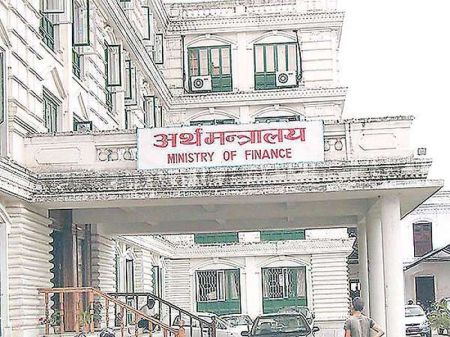

By Rashesh Vaidya
Camels and Eagles
The rating system identifies the problematic banks which are in need of increased supervision.
A commercial bank’s performance can be measured in terms of its ability to meet the expectations of its owners, employees, depositors and borrowers. A bank’s performance can be evaluated by analysing its financial reports- report of condition and report of income. The bank’s management has to protect the interests of all concerned parties - creditors, owners and others. They have to ensure minimum operating efficiency and keep the bank’s risks at a minimum level. Their survival depends upon their operating performance.
Commercial banks are the most regulated of all the institutions in the financial system because of the direct impact of their activities on the economy. Every commercial bank is regulated and governed by their regulator i.e. the Nepal Rastra Bank (NRB), the country’s central bank. The NRB inspects and supervises (on-site and off-site) the banks and financial institutions (BFIs) to ensure that the banks operate in a safe and sound manner. Sections 49(1) and 49(2) and 52(1) to 52(5) of the Bank and Financial Institution Act (BAFIA), 2006 and sections 76 to 88 of the Nepal Rastra Bank Act, 2006 have given full authority to the NRB to direct, supervise and inspect the BFIs it has issued licenses to.
For this purpose, the regulators have developed a uniform numerical rating system called CAMELS Rating, which is based on the financial statements of the banks and on-site examinations. The Bank Supervision Department of NRB can carry out on-site examination of commercial banks in Nepal by sending examination teams to the commercial banks. Onsite examination can be either corporate level covering all aspects of the functioning of the bank or can be a targeted branch-level inspection. On completion of the on-site –examination, examiners perform CAMELS rating of the bank. This rating is exclusively used for supervisory purpose and is not revealed to the general public.
The examiners or inspection team evaluates a bank’s health on the basis of the overall rating based on capital adequacy, assets quality, management quality, earning ability, liquidity position and sensitivity to market risks (systematic risks). The Federal Reserve Regulators in the USA developed the numerical CAMELS rating system in the early 1970s to help structure their bank examination process.
The BFIs are categorised into different groups based on their overall strength, quality and operating soundness. The rating system identifies the problematic banks which are in need of increased supervision. In the CAMELS rating system, each bank is assigned two sets of ratings:
1. Performance Ratings, which comprise six individual ratings that address each of the CAMELS components; and
2. An overall Composite Rating, which is a single rating based on a comprehensive assessment of the bank’s overall condition.Both the ratings are scored on a numerical scale of 1 to 5 in the ascending order of supervisory concern where “1” represents the best rating and “5” the worst.
Here is a description of the rating scores for each of the six components:
Rating 1 (A) indicates very strong performance
Rating 2 (B) indicates above-average performance that adequately provides for a safe and sound operation of the BFIs.
Rating 3 (C) indicates performance that is flawed to some degree.
Rating 4 (D) indicates unsatisfactory performance which, if left unchecked, could threaten the solvency of the BFIs.
Rating 5 (E) indicates very unsatisfactory performance and calls for immediate remedial attention for the survival of the BFIs.
The rating of banks can be further developed by giving a score to each component of the CAMELS, known as the Composite CAMELS Rating Score. The Composite CAMELS Rating can be calculated as:
Composite CAMELS Rating= C(0.25)+A(0.25)+M(0.25)+E(0.10)+ L(0.10)+S(0.05)
Each of the above six parameters can be weighted on a scale of 1 to 100 and contains a number of sub-parameters with individual weightage. The banks should be rated on a five-point scale (A to E) based on the lines of the international CAMELS rating model.
The CAMELS system evaluates banks on the following six parameters:
1. Capital Adequacy: Capital adequacy has been the main pillar of existence of any bank. Banks have to maintain a proper mix of different types of capitals to avoid pressure on their dividend policies and inadequacy of total capital funds against the risk exposure. Capital adequacy is measured by the ratio of capital to risk-weighted assets (CRAR). A sound capital base strengthens the confidence of depositors.
2. Asset Quality: One of the indicators for asset quality is the ratio of non-performing loans to total loans (Gross Non-Performing Assets - GNPA). The gross non-performing loans to gross advances ratio is more indicative of the quality of credit decisions made by bankers. A higher GNPA is indicative of poor credit decision-making.
3. Management: The ratio of non-interest expenditures to total assets can be one of the measures to assess the working of the management. This variable, which includes a variety of expenses, such as payroll, workers’ compensation and training investment, reflects the management policy stance.
4. Earnings: It can be measured as the return on asset ratio.
5. Liquidity: The cash maintained by a bank and balances with the central bank to the total asset ratio is an indicator of the bank’s liquidity. In general, banks with a larger volume of liquid assets are perceived safe, since these assets would allow them to meet unexpected withdrawals.
Section 38 of BAFIA, 2006 provides for maintaining a good liquidity position by the BFIs. Commercial banks are required to maintain CRR (cash reserve ratio) at 5 per cent of their total deposits. The NRB monitors the CRR weekly, and the liquidity profile on a quarterly basis.
6. Sensitivity to Market Risks/Systems and Control: Risks associated with adverse movements in the exchange rates (including gold positions), interest rates, liquidity and investment in equity are covered under market risk management. A bank faces market risks either from its investments in government securities and bonds or from the exchange rate risk that persist in matching position. The market risk is managed by the banks’ Asset and Liability Committee (ALCO) which assesses policies and levels of risk appetite.
However, the CAMELS approach has inherent indeterminacy and subjectivity. There can be instances when an examination of the accounting records cannot decide whether to give an average or below average score. The ‘good’ and ‘bad’ indicators are easy to spot, but the ‘in-betweens’ are not. This is a problem of indeterminacy. But when bank inspectors are forced to make a judgment, it leads to the second problem of subjectivity and hence these ratings could come up with differing levels of expectations and perspectives. Among the six variables, ‘M’ has been missing - the one which assesses the management quality and corporate governance. This has been a paradox because most of the failures of the banks are related with the quality and efficiency of their management. The problem arises while trying to quantify the management quality in the due course of analyzing and evaluating the performance of the BFIs. Thus, the central bank of Taiwan, has been using CARSEL instead of CAMELS to measure the management ability and sensitivity to market to fullfil the Regulatory Compliance and Stability criteria, respectively.

About EAGLES
The EAGLES system is able to measure and compare banks’ performance in a more determinate, objective and consistent manner. The name is derived from the key success factors confronting banks today, i.e. Earning ability, Asset quality, Growth, Liquidity, Equity and Strategy. This approach has been pioneered and has gained credibility among the banking community and fund management industry in Asia, for competition analysis and investment planning, respectively. The authenticity and popularity of EAGLES increased after it was able to predict the Asian financial crisis of the 1980s.
The effective management of a bank strategy is indicated by the Strategic Response Quotient (SRQ). It is an intriguing ratio because it assesses the management’s ability to lend, garner deposits, generate fee-based income and manage the operating cost. An appropriate balance of the three core banking activities will depend on the bank’s strategy. The SRQ is obtained by dividing the interest margin by net operating cost (that is, the total operating cost minus fee income). The higher figure the better combined with excellent risk controls.

EAGLES evaluates banks on the following six parameters:
1. Earning Ability: Earning ability is shown by three noteworthy indicators – Return on Assets (ROA), Return on Shareholders’ Fund (ROSF) and Income/Overheads Ratio (IOR). The importance of IOR is usually not well understood. The main point lies in that income depends on external market forces, while overheads is highly influenced by internal staffing. So, the bank must know how to adjust the staffing according to the market demand for its products and services.
This is shown by three indicators - ROA, Return on Net worth (RONW) and IOR. Usually, the importance of IOR is that income depends on external market forces, while overheads is highly influenced by internal staffing. So, the bank must know how to adjust the staffing according to the market demand for its products and services.
2. Asset Quality: Asset quality is best assessed by on-site inspection of the bank’s loan portfolio. If this is not possible, asset quality can be measured by the level of bad debt provisions, that is, bad and doubtful debts (BDD) as a percentage of total loans. A conservative approach will dictate that the quantum of provision to err on the high side is rather low.
This is best judged by the level of bad debt provisions, that is, bad and doubtful debts as a percentage of total loans. A conservative approach will dictate that the quantum of provision is on the high side is rather low.
3. Growth: Growth rates of loans and core deposits are the most important indicators of how a bank wants to position itself in the market. A high growth loan book without a corresponding growth in the deposit base signifies an intention to increase interest margins. A higher deposit growth without a corresponding growth in loans means that the bank is suffering from low interest margins. For some banks, lower interest margins could hamper their overall profitability.
Growth rates of loans and core deposits are the most important indicators of how a bank wants to position itself in the market. A high growth loan book without a corresponding growth in the deposit base signifies an intention to increase interest margins. A higher deposit growth without a corresponding growth in loans means that the bank suffers from low interest margins.

4. Liquidity: Liquidity can be described as the ability of a bank to have sufficient funds to meet cash demands for loans, deposit withdrawals and operating expenses. For this reason, a balance should be made between the amount of deposits garnered and the quantum of loans extended. The indicator is the deposit-to-loan ratio or credit-deposit ratio (CD Ratio). It is important for a bank, therefore, to maintain a balance between the amounts of deposits garnered and the quantum of loans extended. Also, investment to deposit ratio is used as an efficient indicator of liquidity.
5. Equity: Equity level and capital adequacy have a profound impact on the bank. There is an international guideline (Basel II) that stipulates a bank must have a minimum capital equivalent to 8 per cent of the risk adjusted assets. Even the central bank of Nepal, the NRB, has mentioned a comfort zone of 6 and 10 per cent of core capital and total capital funds, respectively, based on the risk-weight assets (percent). Many banks are restricted to open additional branches unless they meet the minimum capital requirements.
Similarly, sections 31(1) and (2) of BAFIA, 2006 have also categorized the financial institutions into four classes, namely: A, B, C and D based on their minimum capital requirements. And sections 42(1) to 42(5) have clearly explained the provision of capital adequacy for the BFIs in Nepal.
6. Strategy: The effective management of a bank’s strategy is indicated by the strategic response quotient (SRQ). It assesses the management’s ability to lend, garner deposits, generate fee based income and manage the operating cost. As to what is an appropriate balance of the three core banking activities depends on the bank’s strategy. The SRQ is obtained by dividing the interest margin by net operating cost (that is, total operating cost minus fee income). The higher figure the better combined with excellent risk controls.
Each of the six parameters is divided into sub-parameters for effective evaluation. The EAGLES rating, unlike CAMELS, is based purely on arithmetical ratios and hence does not involve grades or ratings. Thus, there is no subjectivity involved in EAGLES and banks are judges purely on the ratio outputs and ranked highest to lowest based on these parameters. Each bank is ranked highest to lowest on each of the sub-parameters. The bank with higher ranks on more sub-parameters will be ranked the highest in that particular parameter. Accumulating all the parameters, the bank that gets the highest rank on more parameters stands on the top of the list.
.jpg)
About MACRO
MACRO is a rating system formerly used by examiners to evaluate the safety and soundness of savings institutions. MACRO is an acronym for the five elements that were evaluated: Management, Assets quality, Capital adequacy, Risk management and Operating results. Based on the examiner’s evaluation, each element would be rated on a scale of 1 to 5, and the institution would be assigned an overall MACRO rating of 1 to 5. The indications of MACRO rating were:
The MACRO Rating System was used by the Federal Thrift Examiners from (exact date) 1984 to August 15, 1994, before it was replaced by the CAMELS Rating System.
Vaidya is a Researcher associated with New Business Age (P) Ltd. He can be contacted at [email protected]






















